The Modern-Era Retrospective Analysis for Research and Applications, Version 2 (MERRA-2)
- PMID: 32020988
- PMCID: PMC6999672
- DOI: 10.1175/JCLI-D-16-0758.1
The Modern-Era Retrospective Analysis for Research and Applications, Version 2 (MERRA-2)
Abstract
The Modern-Era Retrospective Analysis for Research and Applications, Version 2 (MERRA-2) is the latest atmospheric reanalysis of the modern satellite era produced by NASA's Global Modeling and Assimilation Office (GMAO). MERRA-2 assimilates observation types not available to its predecessor, MERRA, and includes updates to the Goddard Earth Observing System (GEOS) model and analysis scheme so as to provide a viable ongoing climate analysis beyond MERRA's terminus. While addressing known limitations of MERRA, MERRA-2 is also intended to be a development milestone for a future integrated Earth system analysis (IESA) currently under development at GMAO. This paper provides an overview of the MERRA-2 system and various performance metrics. Among the advances in MERRA-2 relevant to IESA are the assimilation of aerosol observations, several improvements to the representation of the stratosphere including ozone, and improved representations of cryospheric processes. Other improvements in the quality of MERRA-2 compared with MERRA include the reduction of some spurious trends and jumps related to changes in the observing system, and reduced biases and imbalances in aspects of the water cycle. Remaining deficiencies are also identified. Production of MERRA-2 began in June 2014 in four processing streams, and converged to a single near-real time stream in mid 2015. MERRA-2 products are accessible online through the NASA Goddard Earth Sciences Data Information Services Center (GES DISC).
Figures






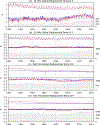



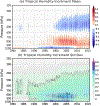

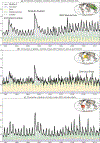


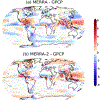

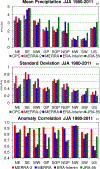

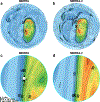
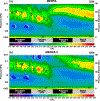



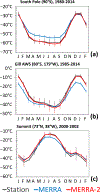

References
-
- Andrews DG, Holton JR, and Leovy CB, 1987: Middle Atmosphere Dynamics. Academic Press, 489 pages.
-
- Bacmeister JT and Stephens G, 2011: Spatial statistics of likely convective clouds in CloudSat data. J. Geophys. Res, 116, D04104, doi:10.1029/2010JD014444. - DOI
-
- Ballish BA, and Kumar VK, 2008: Systematic differences in aircraft and radiosonde temperatures. Bull. Amer. Meteor. Soc, 89, 1689–1707.
Grants and funding
LinkOut - more resources
Full Text Sources
Other Literature Sources
